
In response to demand for more current labour market information, Food Processing Skills Canada developed the Rapid Results Employer Opinion Panel. As G.I. Joe said, “knowing is half the battle” and getting up-to-date industry information gets you more informed to meet the challenges that you face. The panelists will be asked to complete 6 surveys, each with a different theme relevant to the industry.
This is the first report in the Rapid Results Series and the theme is Human Resources and Recruitment.
This was designed to be a national panel covering all food and beverage processing sectors. It is conducted at the facility level to capture differences in the size and location of facilities. Each survey has 2 sets of questions: core questions that will be asked during every survey and theme questions asked during this specific survey.
The survey was administered from May 31 – June 21, 2023. The response rate was 59% (58 of 99 total Employer Panelists completed it).
In order to get a sense of recency and track changes over the next year or so, we set the timeframe for many of the questions in this survey as “in the period between March 31, 2023 and now (now being June 2023).”
While this sample is not representative of the entire industry, it does include a reasonable cross-section of it, based on size, region, and sub-sector.
The food and beverage processing industry generated over $153.6 billion in sales annually as of 2022, with Meat product manufacturing generating more sales than any other subsector. As of 2021, there were approximately 13,150 food and beverage processing establishments in Canada, with the majority of establishments are concentrated in Ontario, Quebec or British Columbia.
The food and beverage processing industry is a significant contributor to the Canadian labour market, employing approximately 300,000 workers in 2022, with most food processing establishments employing less than 100 people.
FPSC has done a labour forecast separate from Rapid Results as another facet of our Labour Market Information. It states that between now and 2030, 66,870 current workers are expected to retire. That is 22% of the current workforce.
Retirements accounted for only 12% of the turnover panelists experienced. This will increase over the next 7 years, and competition from other businesses will rise as well. This is why employee recruitment and retention are more important than ever before.
In addition to the pressure from retirements, our forecast found that there are significant opportunities for growth, and another 25,700 workers will need to be added to allow employers to capitalize on these opportunities.
Adding to this challenge is the over 50,000 positions currently vacant. Vacancies are incredibly costly for industry – based on our research, the current level of vacancies costs Canada’s food and beverage processing sector over $3.4 billion in lost net revenue annually.
Current vacancies, new hires needed for growth, and projected retirements mean that Canada’s food and beverage processing sector needs 142,000 new people by 2030 to overcome the challenges and take advantage of the opportunities in front of it.
Another way to boost retention is to have a robust onboarding program to integrate new hires into your workplace. Unfortunately, the majority of respondents’ onboarding processes clock in at under 10 hours. There is definitely a benefit in getting a new hire up to speed and working quickly; however, many HR experts believe that to really boost retention rates, onboarding processes should be significantly longer than 10 hours.
Another tool to help deal with the labour shortage is automation. We looked at five areas in which businesses could automate processes to improve productivity and mitigate labour shortages. They are: Sales & Marketing, Core Production, Business Operations, Human Resources, and Training.
At least a third of respondents had automated something in each of these areas in the last 2 months, with more than half of the respondents planning to automate more in the next 6 months in core production, training, and business operations.
In the context of the labour shortage and despite worsening recruitment challenges, 81% of respondents are optimistic about the future of their businesses and 75% are optimistic about the future of the food and beverage processing sector. This is a resilient industry ready to meet the challenges it faces head on.
“More than 50% of respondents plan to invest in automation, digitization, or wireless interconnectivity for their core production in the next 6 months.”
We learned that in this period, recruitment challenges have increased or stayed the same for the vast majority of employers (76%). The biggest challenges for the recruitment of both production and non-production workers are the lack of applicants with relevant experience and the lack of applicants with proper training/certificates.
The research looked at onboarding, employee exit practices, and some features of turnover. What we learned is that in the food and beverage processing sector, employees seem to be onboarded quickly, usually in less than 10 hours.
This finding has raised several other questions, such as how the length of onboarding affects turnover, which we will do a deep dive on in another round of research in the year ahead.
A majority of facilities have indicated that their recruitment challenges have stayed the same or worsened in the last 2 months (March 31 – May 31, 2023). This is not surprising given the labour shortage. One surprising statistic is that 17% of companies reported no vacancies!
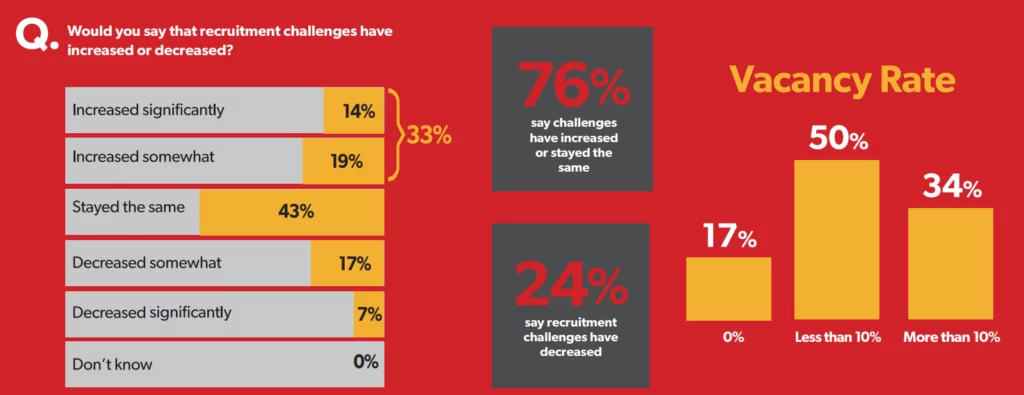
The biggest challenges for the recruitment of both production and non-production workers are the lack of applicants with relevant experience and the lack of applicants with proper training/certificates.
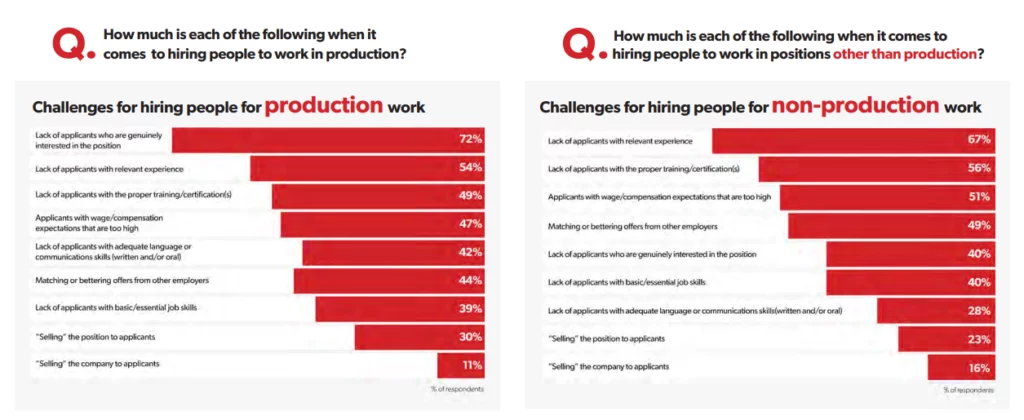
86% of respondents hired new staff in the survey period. There was a large preference for traditional domestic hiring sources such as private job boards and referrals from existing employees. This lines up with FPSC’s previous perceptions research that found friends and family and employers were the most trusted sources for learning about new opportunities. It also showed that job search sites and company websites were two of the top places people looked for new jobs.
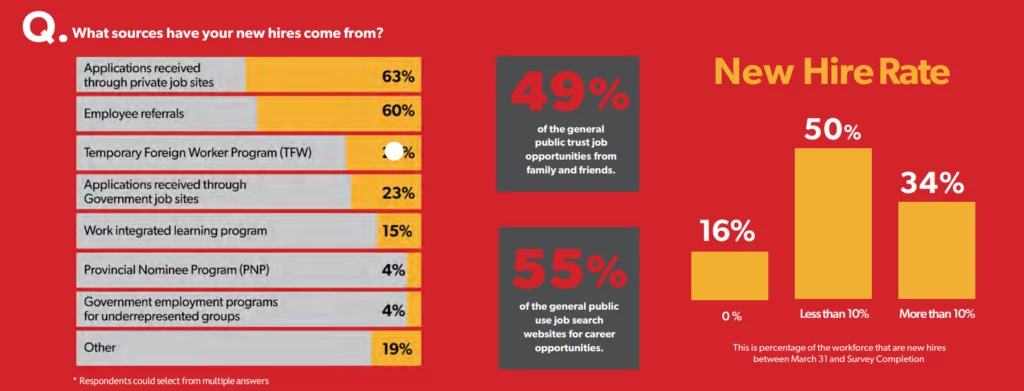
The research looked at onboarding, employee exit practices, and some features of turnover. What we learned is that in the food and beverage processing sector, employees seem to be onboarded quickly, usually in fewer than 10 hours. This finding has raised several other questions, such as how the length of onboarding affects turnover, which we will do a deep dive on in another round of Rapid Results research.
With onboarding, there are two sides to the equation: the employer side and the employee side. From the employer perspective, you want to make sure that new hires can function safely, feel engaged, and fully understand their role. From the employee perspective, they want to emerge from the onboarding process feeling like they belong, know how to succeed in their new role, and understand the vision of your organization.
There are many different approaches to onboarding that are utilized in the workplace today. Find the one that works for you.
Most respondents indicated that they provided fewer than 10 hours of onboarding for new hires, with only 8% of respondents taking more than 40 hours of onboarding. An overwhelming majority of respondents indicated that all of their onboarding is done in-house.
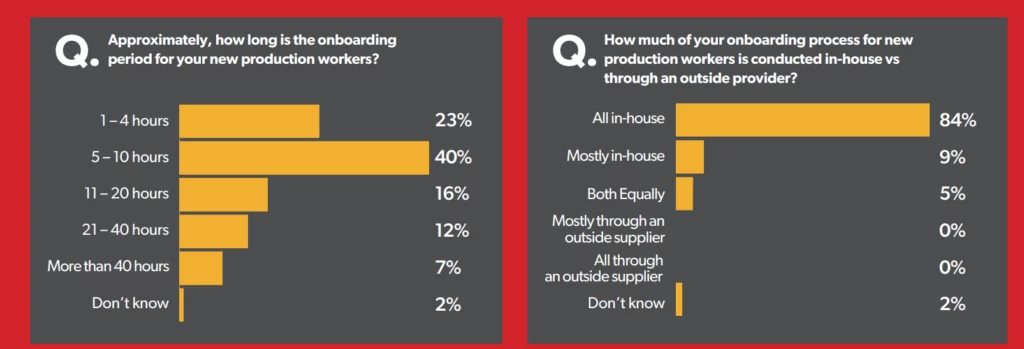
Organizations with a strong onboarding process improve new hire retention by 82%, productivity by over 70%, and saw a 60% year-over-year improvement in revenue.
– Oak Engage, a UK-based Workforce Communications firm
According to Bamboo HR, a US-based HR support company, 91% of new hires who received an effective introduction to company culture training feel connected to their workplace—compared to just 29% who say their onboarding experience was lacking. ADP Canada found that 69% of workers are more likely to remain with their employer for three years if they were engaged by a robust onboarding experience. Additionally, 54% of employers with active onboarding programs are seeing higher employee engagement.
A robust onboarding process equips employers to better deal with unqualified applicants and retain them, which 74% for production work and 68% for non-production work identified as a challenge. Best practices for onboarding state that onboarding doesn’t end when a new hire can work at the facility; it is an ongoing process that can range from 3 months to 1 year, until the new hire is integrated into the workplace and workplace culture.
“78% of employees want to know about their company’s objectives and plans.”
– FPSC’s Working Together Report 2020
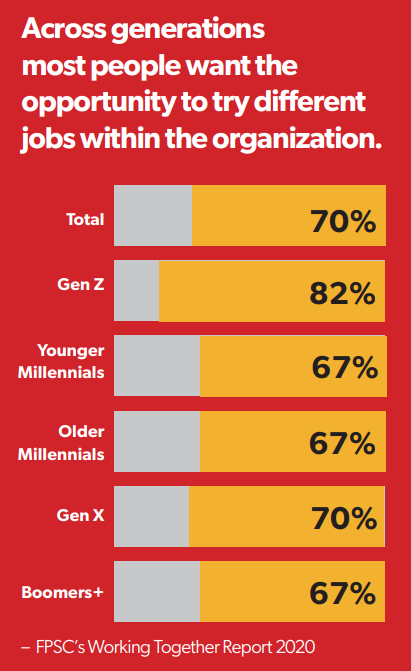
Starting wages are often the first thing a potential recruit wants to know and there is a large variance in wages offered with 16% of respondents paying under $16/hr and 14% paying more than $20/hr. Wages are better understood in the context of their province as minimum wages vary across the country.
70% of respondents have fewer than 150 paid positions, which reflects the national situation.
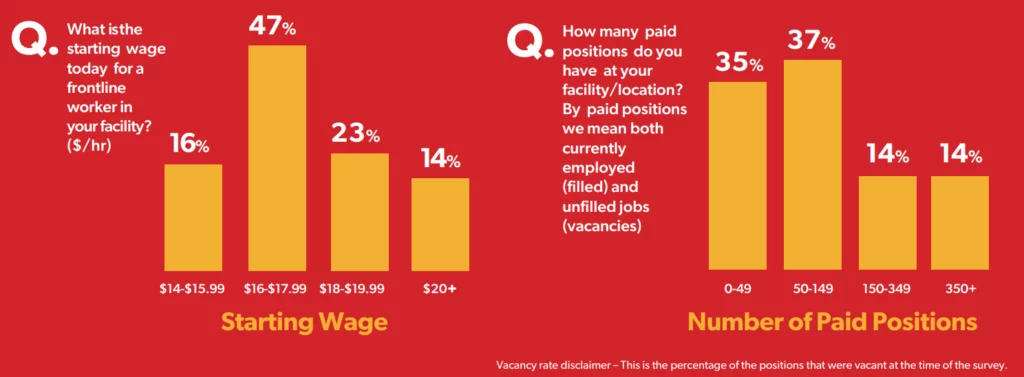
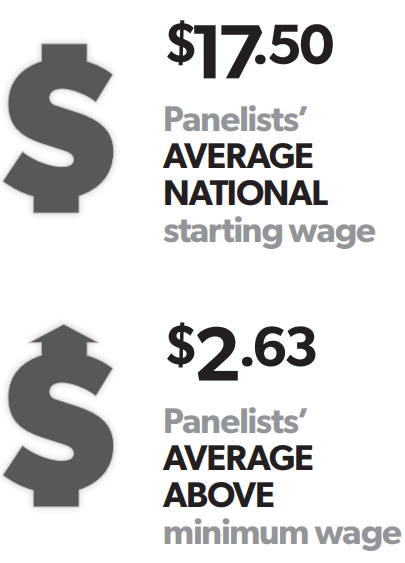
| Province | Panelists Average Starting Wage | Provincial Minimum Wage | Amount above Minimum Wage |
|---|---|---|---|
| British Columbia | $17.60 | $16.75 | $0.85 |
| Alberta | $18.50 | $15.00 | $3.50 |
| Saskatchewan | $16.20 | $13.00 | $3.20 |
| Manitoba | $16.10 | $14.15 | $1.95 |
| Ontario | $17.90 | $15.50 | $2.40 |
| Quebec | $17.90 | $15.25 | $2.65 |
| New Brunswick | $17.00 | $14.75 | $2.25 |
| Nova Scotia | $16.70 | $14.50 | $2.20 |
| Prince Edward Island | $16.50 | $14.50 | $2.00 |
| Newfoundland and Labrador | $17.90 | $14.50 | $3.40 |
When we asked about the reasons for turnover, we learned that it is driven mostly by competition from outside the manufacturing sector (51%) and competition from other manufacturing sectors (53%), illustrating labour market tightness across the entire economy and the fierce battle for talent. There is less competition from within the food and beverage processing sector (33%).
We also learned that for most facilities, when an employee leaves, there are no formal exit interviews (only 33% always conduct one). Exit interviews, if done consistently, can pinpoint opportunities for employee development, generate insight into management issues, allow employers to stay up to date with compensation and benefits expectations, and strengthen the employer brand.
Competition from employers outside food and beverage manufacturing is driving turnover. With other manufacturers being identified by 53% of respondents and non-manufacturing employers being identified by 51%.
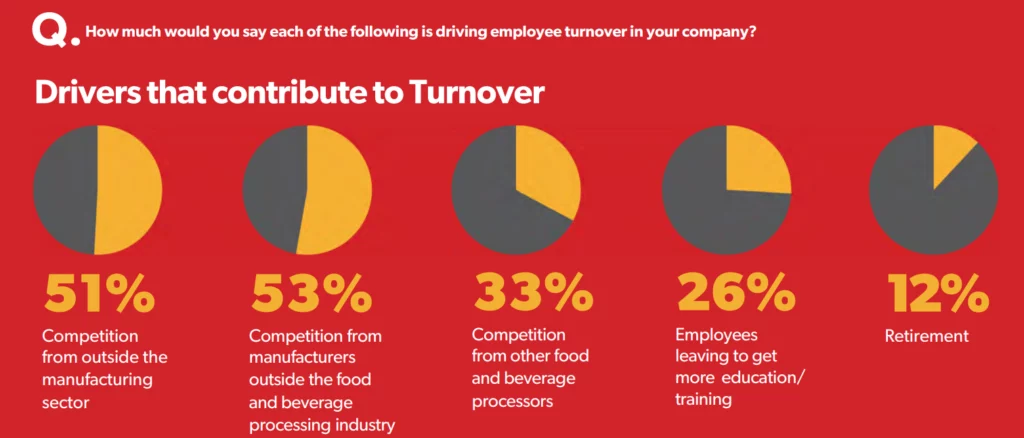
When an employee is leaving it is valuable to determine their reasons for doing so. 67% of respondents always determine the reason an employee is leaving their organization. One valuable tool for gaining this information and other insights is an exit interview. 33% of respondents always conduct exit interviews. Especially as 79% of respondents saw people leave their organization in the period covered by the survey.
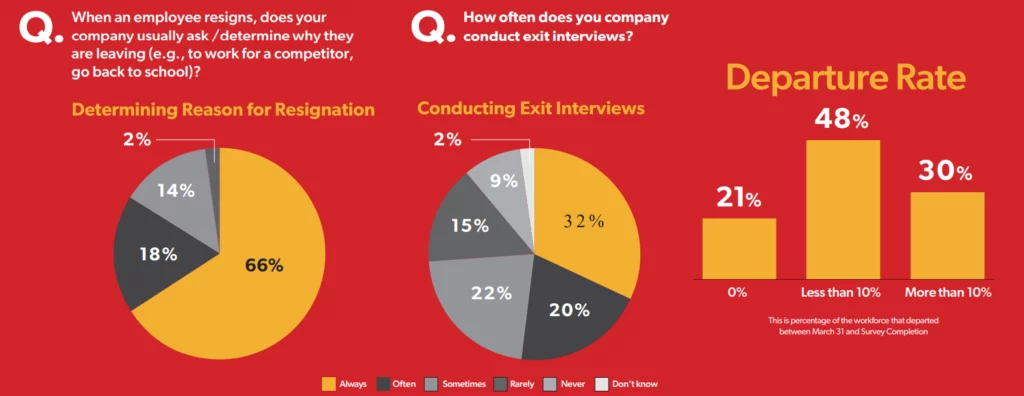
Most respondents are optimistic about their business (81%) and the future of the Canadian food and beverage processing sector (75%). The majority also expect revenues to increase over the next year (67%) and many are investing in innovation (and expect to continue to over the next six months).
This optimism is encouraging. Having this outlook about one’s business can be beneficial in several ways. This optimism could be the foundation needed to stay motivated and focused on goals, to help businesses make better decisions, to attract customers and innovators to businesses, and to ultimately create and foster a positive work environment.
In future rounds of research, we will dig deeper and put a spotlight on optimism in the sector as well.
More than half of respondents felt that current supply issues are negatively affecting business and that hiring and retaining people is more challenging. Respondents also believe that the industry will overcome these challenges, as 75% are optimistic about the future of the industry and 81% are optimistic about the future of their business.

Automation, digitization, and wireless interconnectivity are vital methods that businesses can use to become more efficient and overcome labor shortages. While it isn’t possible for every employer to find these efficiencies in every area of their operation, 30% of respondents had made investments in each of the 5 areas of innovation that we looked at. Furthermore, over half of respondents have planned investments in 3 of the 5 areas in the next 6 months.
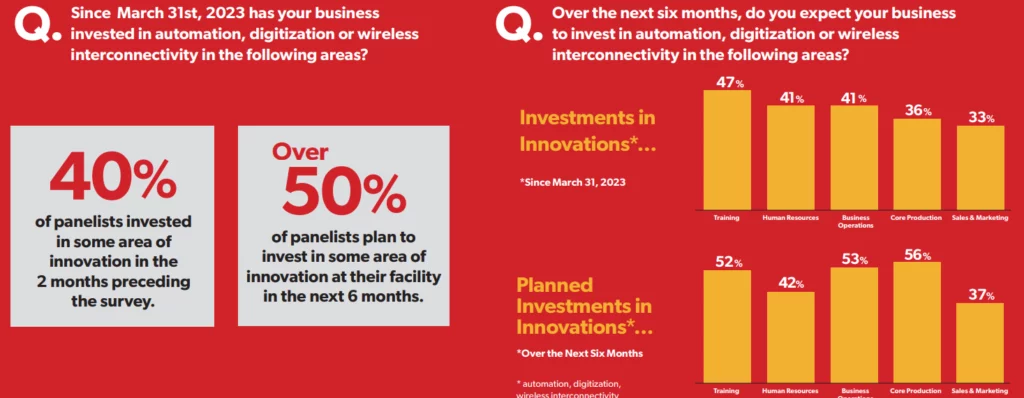
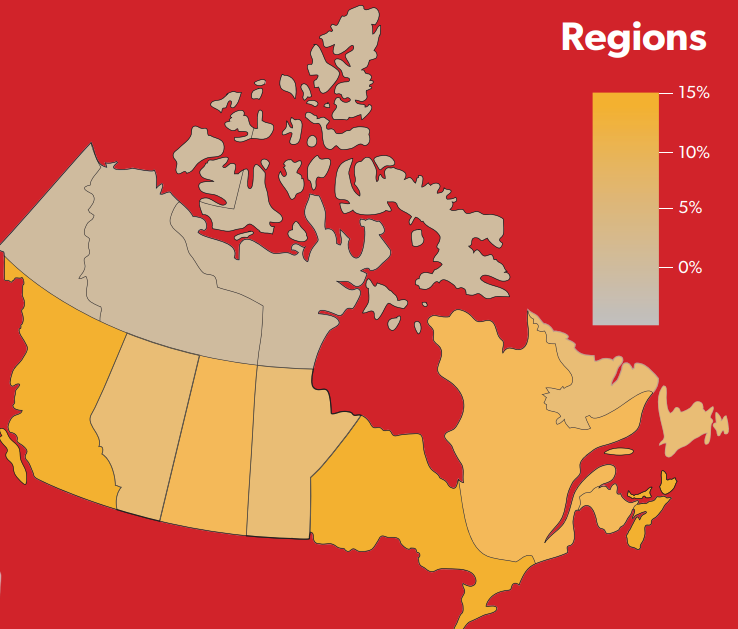
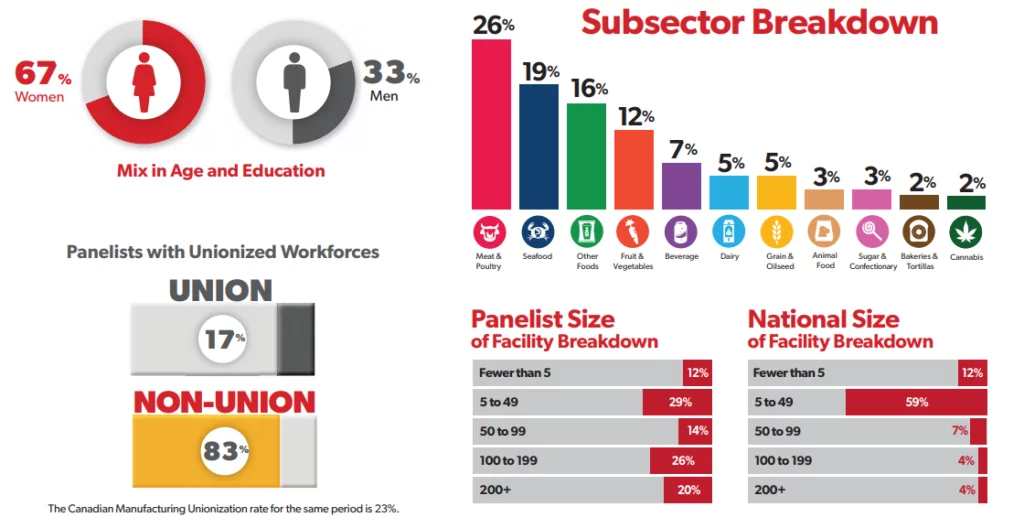
If you’re not already signed up to participate in the Rapid Results
Employer Panel sign up now at rapidresults.ca
Start dates for Rapid Results surveys:
This project was funded by the Government of Canada’s Sectoral Initiatives Program.
The opinions and interpretations in this publication are those of the author and
do not necessarily reflect those of the Government of Canada.

Copyright © Food Processing Skills Canada 2023. All rights reserved.
All rights reserved. No part of this publication may be reproduced or transmitted in any form or by any means, or stored in a database and retrieval system, without the prior written permission of Food Processing Skills Canada.
Food Processing Skills Canada
201 – 3030 Conroy Rd, Ottawa, Ontario K1G 6C2